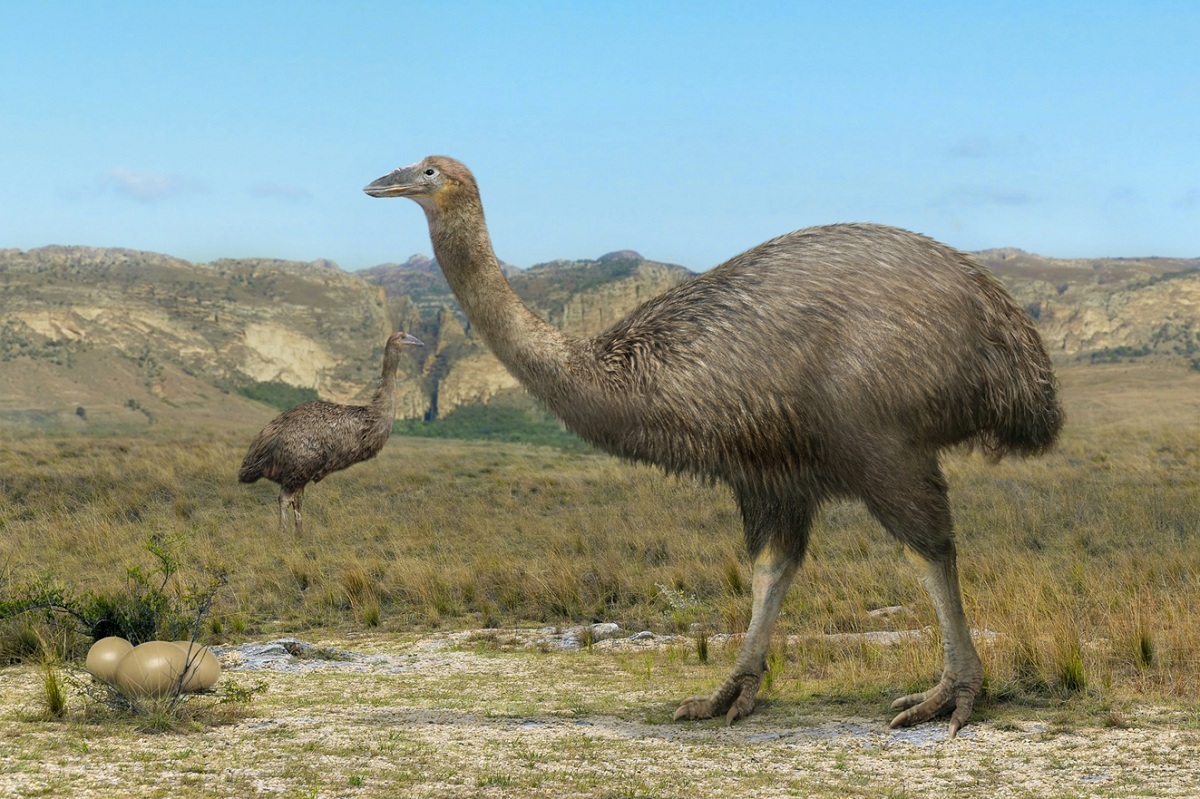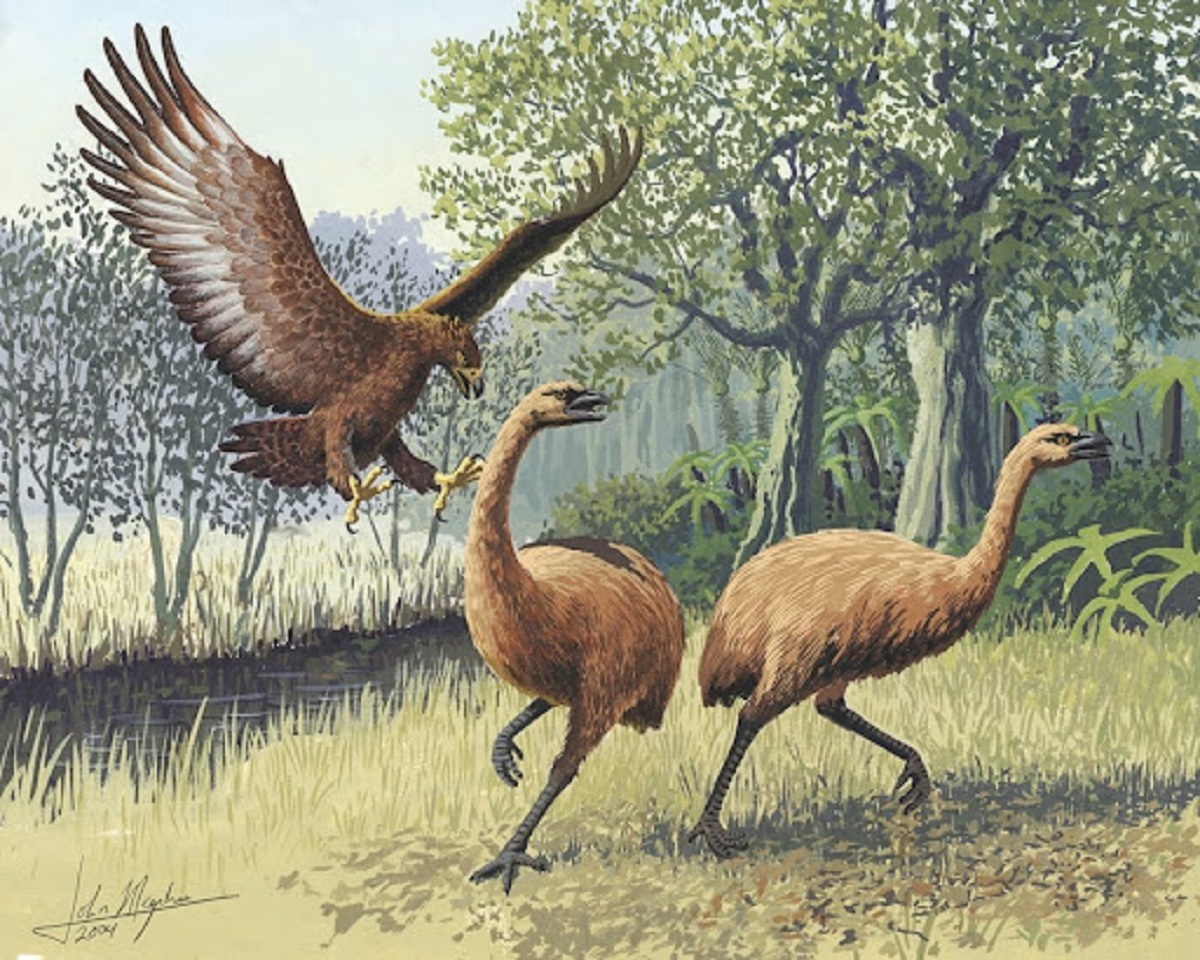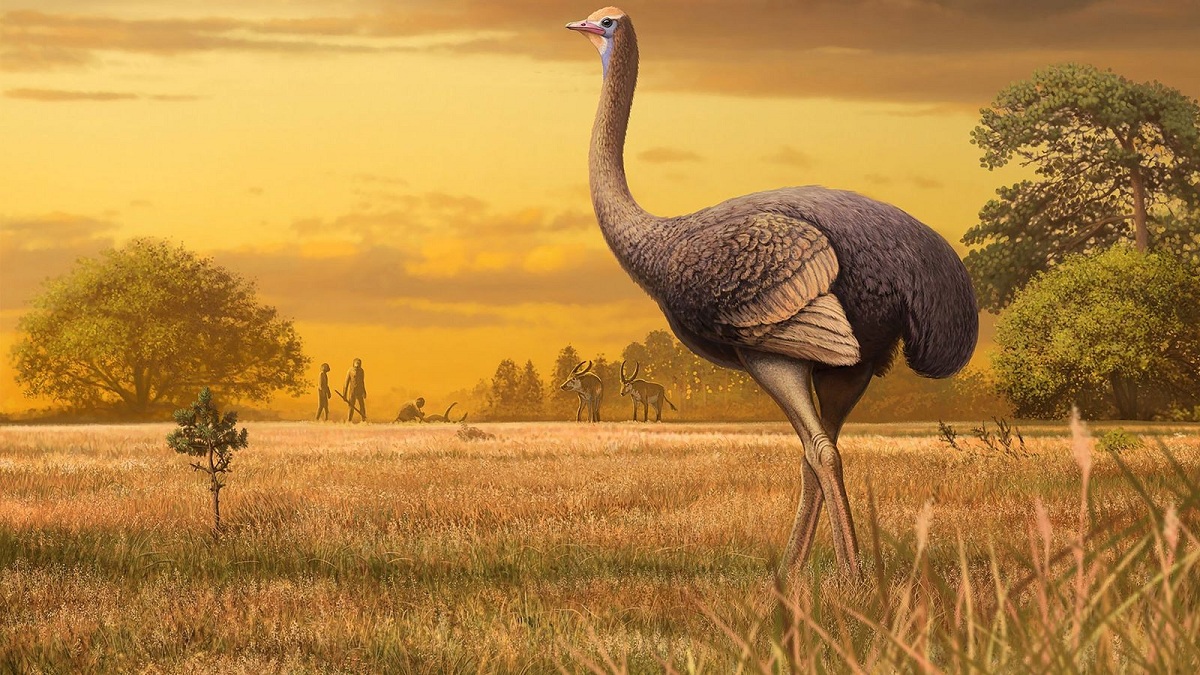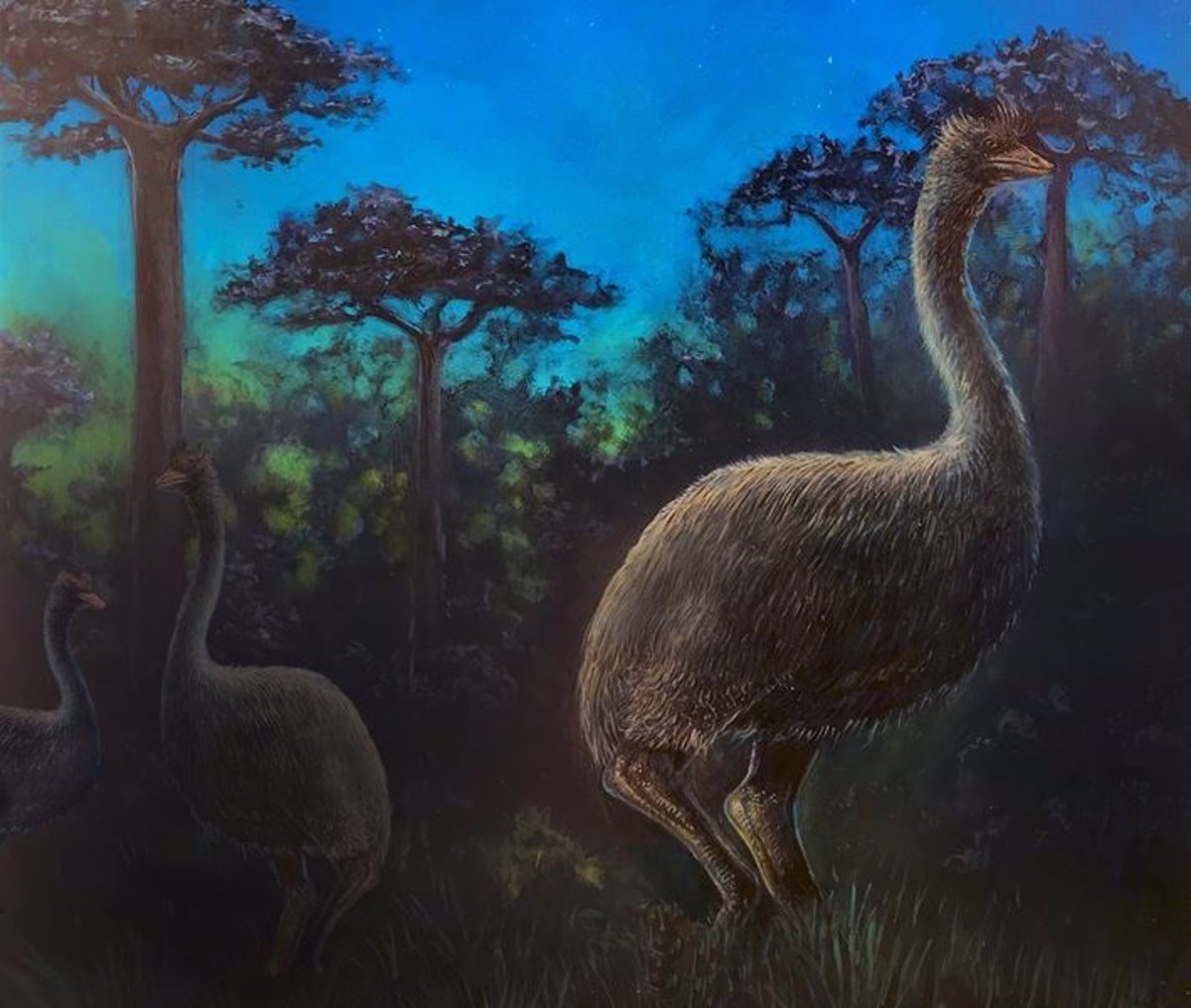
El elephant bird o Aepyornis stands out among the largest and strongest birds in the world, with a weight of up to 500 kg (five times the ostrich) and a height of two to three and a half meters. Living in the jungles of Madagascar. It has characteristics similar to those of modern ostriches, but genetic samples collected in fossil eggs link it to kiwi. There is no specific data on when it became extinct, but it is believed that the arrival of humans on the island may have affected its disappearance about 2.300 years ago. Its name comes from the aboriginal translation of "vouron patra", which literally means bird or elephant bird.
In this article we are going to tell you everything you need to know about the elephant bird, what are its characteristics and curiosities.
Evolution and history of the elephant bird
It is estimated that elephant birds evolved 80 million years ago and reached enormous sizes due to the huge islands, this is an evolutionary process, when they settle on islands or territories far from their original habitat, their proportion will increase.
When Westerners arrived in Madagascar around the XNUMXth century, they were surprised to hear locals talk about giant jungle-dwelling birds. Few people believed them until the mid-nineteenth century, when three eggs and bones belonging to this specimen were taken to Paria.
The bones found in different periods date back to the XNUMXst and XNUMXnd centuries. 1000-year-old eggshells were also discovered, and these findings led experts to hypothesize their existence in humans. However, the date of extinction remains a mystery. Some people think it may have happened in the XNUMXth century.
Key features
The skull and neck of elephant birds are very similar to those of ostriches, but recent studies have shown that these birds have no ancestral relationship. Its weight and size make it the second tallest bird in history, only surpassed by the also extinct New Zealand Moas.
This bird has huge, powerful legs and huge, powerful claws. It moves slowly because it does not need to reach a great speed because it has no natural enemies until humans arrive.
It cannot fly, but has large, undeveloped wings. Their feathers are thick and pointed, very similar to those of the emu. Its beak is shaped like a chest. The egg of an elephant bird can reach a diameter of one meter and one height of 33 centimeters, and the sewage outlet can reach up to 9 liters. If compared to a chicken egg, it would take about 200 units to fill one of these. One elephant bird egg could feed 120 humans.
Habitat and behavior of the elephant bird
The elephant bird is said to have lived in the open forests of Madagascar for more than 60.000 years, but the last recorded sighting occurred in the island's swampy forest. They are herbivorous birds. They feed on plants and fruits from the island of Madagascar, as well as a large number of leaves and branches. It is theorized to include the fruits of Arecaaceae plants in your diet.
There are different theories about the cause of the extinction of this bird, but all agree that humans killed it. The bird ruled the island for a long time. It is without a doubt one of the largest animals in the whole place. It has no natural enemies or predators large enough to hunt it down.
The first theory states that the extinction occurred about 2.000 years ago, and the appearance of humans on the island marked the arrival of the first predator that could deal with the birds. Due to their enormous size, the settlers apparently killed them because they were a source of food for the population. Even so, the theory holds that the first settlers of the island were not responsible for their eventual disappearance, since records indicate that many of them survived.
But as the Arabs reached the coast of Madagascar, the situation worsened, because not only were they hunted, but they destroyed their nests to steal eggs. With this, they prevented the reproduction of birds. The decisive factor in the extinction was deforestation for agriculture, thus destroying their homes.
Finally, due to continued deforestation of their nesting habitat, these animals finally became extinct in the 34th century. Somehow, some people insist on destroying everything. Now only fossil bones and eggs of elephant birds have been found. Some of the latter have a circumference of more than one meter and a diameter of more than 160 cm. To give you an idea, its volume is about XNUMX times that of an egg.
Some curiosities
Legend has it that when Marco Polo passed through Madagascar he heard rumors of a great bird, which gave rise to the legend of the Roc bird. These large birds live in the mountains and have been cited by many authors in their works. The huge eagle has great power.
The elephant bird's egg is the largest ever recorded, even bigger than that of a dinosaur. An elephant bird egg will be auctioned in 2015 for approximately € 70.000. His age is 400 years.
Many scientists have questioned whether the elephant bird can be cloned. Since man is playing the role of God, he first has the luxury of letting other creatures go extinct without weighing the consequences. Then try to resurrect them. The consequences are still difficult to calculate.
It is by finding the DNA profile of an extinct animal that it can "resurrect." How is this accomplished? Through the cloning process, a "surrogate mother" from another species of the same family is used. For elephant birds, ostriches can be used. So, do not be surprised if in the near future you can visit the places that Steven Spielberg imagined for his Jurassic Park that there is nothing to envy. In the case of elephant birds, let's hope they continue to maintain their old eating habits.
I hope that with this information you can learn more about the elephant bird and its characteristics.


